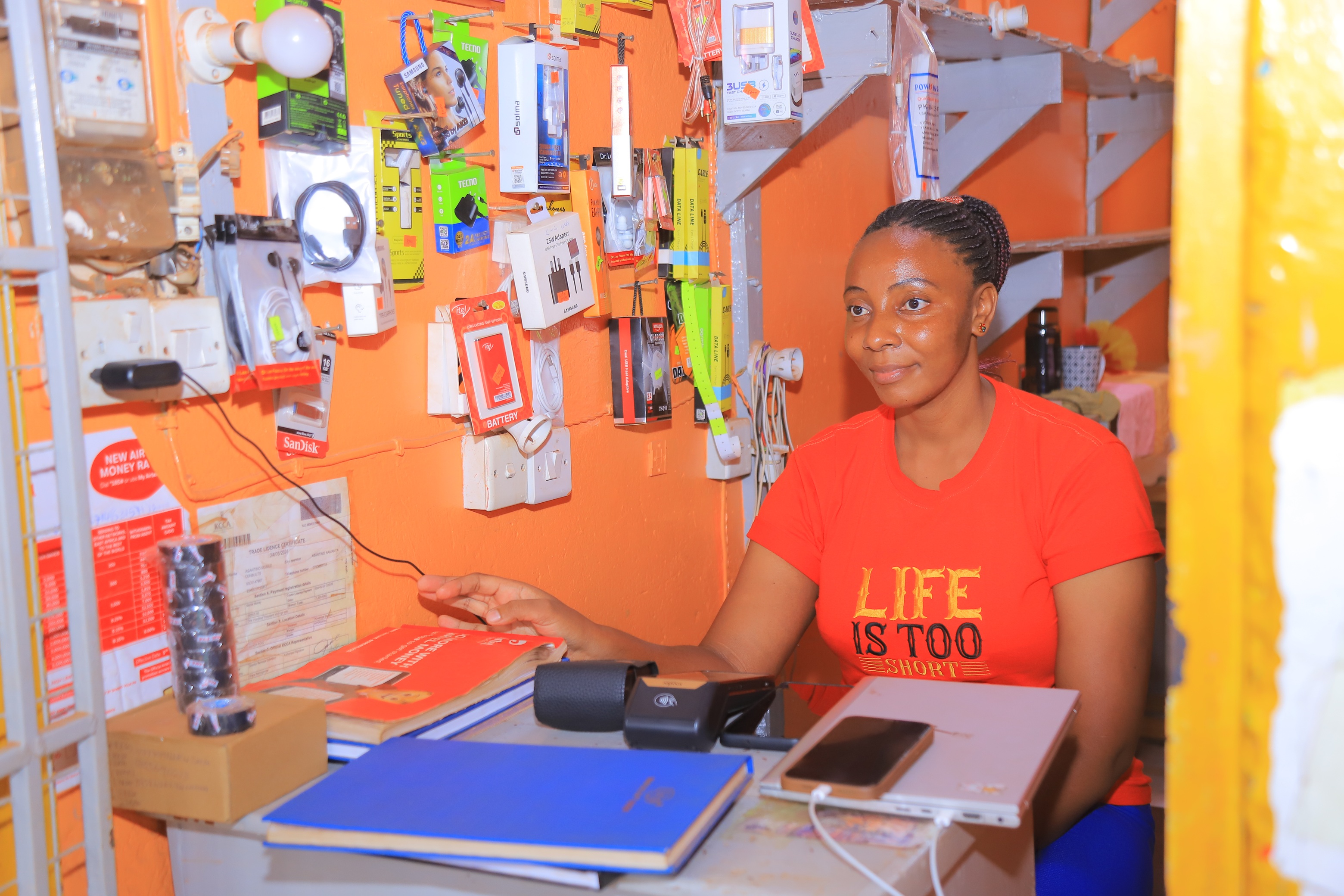
Human Capital
Reflects the skills, education, and experience levels of entrepreneurs. High human capital means that business owners are well-prepared and capable of handling business operations effectively
Key Highlights
The high score for the human capital pillar suggests that Ugandan entrepreneurs consider that they have access to an appropriately skilled and educated workforce. This is a strong foundation for building successful and innovative businesses. - MSMEs typically believe hiring new employees is necessary when business activities increase significantly or the business experiences growth, they see potential gains from business skills training in areas like financial management, customer handling, and networking. Furthermore, they see better treatment, fair pay, and providing refresher trainings as helpful in employee retention.
As a young entrepreneur, I believe in taking risks, so I hire when I see potential growth
Male, Mbarara District
Size of businesses among men and women entrepreneurs
Firm size, as measured by the number of employees, is a common way to classify MSMEs and assess their scale of operation. The distribution of firms across micro, small, and medium size categories can provide insights into the structure of the MSME sector and the relative prevalence of different types of enterprises.
Number of employees in MSMEs by gender by those aged 18-30 years.
More than a third (34.7%) of entrepreneurs aged 18-30 have no employees (sole proprietors), 43.8% have 1-2 employees, 13.2% have 3-4 employees, 6.4% have 5-10 employees, and only 2.0% have 10 or more employees. There are significant gender differences in the proportion of sole proprietors. Females are significantly more likely than males to have no employees (42.4% vs 26.3%), suggesting that that women led businesses are more likely to be one-person operations. The proportion of businesses with 1-2 employees is similar for both genders (44.0% for males and 43.5% for females).
Males are significantly more likely than females to have larger businesses with 3 or more employees. For example, 16.7% of male-led businesses have 3-4 employees (compared to 10.0% for females), 10.1% have 5-10 employees (compared to 3.0% for females), and 2.9% have 10 or more employees (compared to 1.1% for females).
While 29.7% of male-led businesses have 3 or more employees, only 14.1% of female-led businesses had a similar number of employees.
Although the most common business size is 1-2 employees for both genders, there are significant gender differences at the smallest and largest ends of the spectrum. Women are more likely to be sole proprietors, while men are more likely to lead larger businesses with 3 or more employees. This suggests potential barriers for women in scaling up their businesses and highlights the need for targeted support and resources to help women-led businesses grow. Efforts to promote entrepreneurship should consider these gender patterns and aim to create more inclusive growth opportunities.
Entrepreneurs were asked the driving factors for them to hire more employees. Overall, they make the decision to hire new employees when they experience an increased workload, observe that the business is not performing optimally, recognize that current staff have reached their capacity, and see opportunities for business growth. The decision is driven by the need to maintain efficiency, productivity, and the ability to meet the demands of a growing business.
Employee Retention in youth owned businesses
The majority of young entrepreneurs (63.8%) reported that their employees have never left, suggesting high employee retention. There are significant gender differences in employee retention. Female-led businesses are significantly more likely than male-led businesses to report that their employees have never left (70.6% vs 56.4%). This suggests that women-led businesses may have higher employee loyalty and satisfaction.
The majority of young entrepreneurs (63.8%) reported that their employees have never left, suggesting high employee retention.
There are significant gender differences in employee retention. Female-led businesses are significantly more likely than male-led businesses to report that their employees have never left (70.6% vs 56.4%). This suggests that women-led businesses may have higher employee loyalty and satisfaction.
Male-led businesses are significantly more likely than female-led businesses to report employees staying for longer durations before leaving. 12.0% of male-led businesses have employees staying less than 2 years (compared to 8.1% for females), 7.6% less than 3 years (compared to 3.6% for females), and 9.1% for 3 years or more (compared to 4.4% for females).
The proportion of businesses with employees staying less than 6 months or less than 1 year is similar for both genders (around 5% and 9% respectively). Although most entrepreneurs reported high employee retention, there are significant gender differences.
Women-led businesses are more likely to have employees who never leave, suggesting higher loyalty, while men-led businesses are more likely to have employees staying for longer durations before leaving. This could reflect differences in factors such as working conditions, benefits, and management styles.
Entrepreneurs highlighted several reasons why employees stay or leave their jobs in the businesses. The main reasons include timely payment, respectful treatment, opportunities for skill development, favourable working conditions and benefits, and a caring and appreciative work environment.
